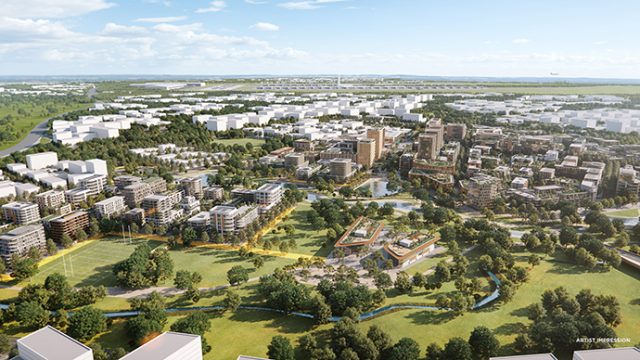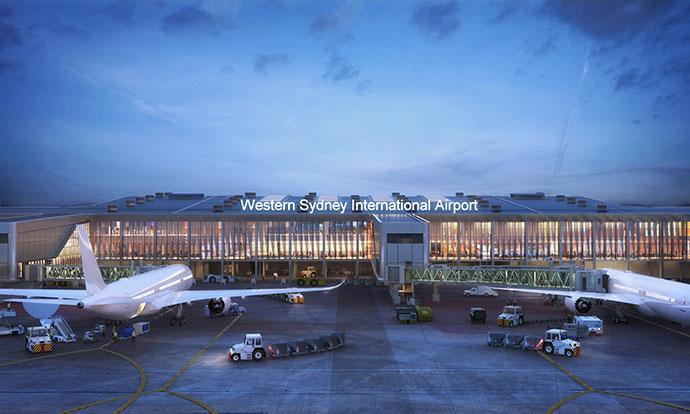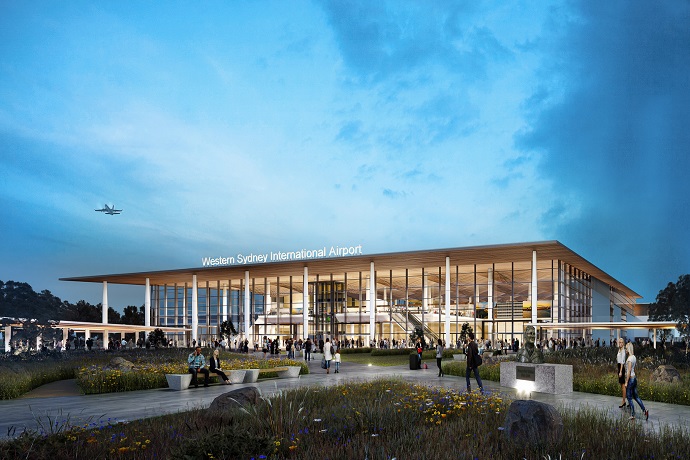
What is Bradfield?
Bradfield City Centre is one of the biggest urban developments ever undertaken in Australia and is the first major city to be built in over 100 years. It will grow and evolve over the next 30 years to become a hub for advanced industries.
Bradfield City Centre will support wider employment, education, and training opportunities in the Western Parkland City and will help to deliver 200,000 new jobs.
Bradfield is on the doorstep of the Western Sydney International Airport.
The need for an airport in Western Sydney
The demand for flights in the Sydney region is forecast to double over the next 20 years. Sydney (Kingsford Smith) Airport cannot accommodate this demand alone.
Building the airport
The Australian Government has committed up to $5.3 billion in equity over 10 years to develop Western Sydney International (Nancy-Bird Walton) Airport through a Commonwealth company, Western Sydney Airport.
Construction is underway and the airport is on track to open in 2026.
From day one, Western Sydney International will be a full-service airport capable of catering for domestic and international passengers as well as freight services. The airport will open with a single runway and facilities to handle 10 million passengers.
Western Sydney International will be developed in stages as demand grows. The airport is initially expected to handle around five million passengers a year, reaching 10 million passengers by around 2031.
A second runway will be added when needed.
By around 2063, the airport is expected to accommodate approximately 82 million passengers annually.

Responsibility for the airport project
Western Sydney Airport is the company that will build and operate the airport.
The Government will act as the airport regulator and ensure the project meets all necessary design and environmental requirements.
The Government will remain responsible for flight path design, road and rail connections and biodiversity offsets.
Accessing the airport
The Australian and NSW governments are constructing new and upgraded roads around the airport under the $4.1 billion Western Sydney Infrastructure Plan (WSIP).
This includes the M12 Motorway, which will connect the airport to Sydney’s motorway network at the M7 in the east and the upgraded The Northern Road in the west.
Other projects under the WSIP are well underway and will help ease congestion around the airport and throughout Western Sydney.
A key project in the Western Sydney City Deal, the North-South Rail Link is now known as Sydney Metro – Western Sydney Airport. The Australian and NSW governments have committed to deliver Stage 1 of Sydney Metro – Western Sydney Airport to connect travellers to the airport by its opening in 2026. This fully automated metro service will become the transport spine for the region, from St Marys to the Western Sydney Aerotropolis.
Flight paths
Brochures and factsheets on the WSI flight paths, aircraft noise and the Environmental Impact Statement are available on the WSI airspace and flight path design Online Community Portal at www.wsiflightpaths.gov.au.

Why Badgerys Creek?
The Badgerys Creek airport site is approximately 1,780 hectares (almost twice the size of the Sydney (Kingsford Smith) Airport site) and has been preserved for an airport development for nearly 30 years.
Planning has ensured the Airport Plan makes the best use of the airport site, while minimising impacts on surrounding communities and preserving land for the airport’s long-term growth.
The Joint Study assessed 80 sites across 18 locations in the Greater Sydney region. Consistent with previous studies, Badgerys Creek was found to be the best site to meet growing aviation demand due to its proximity to road and rail transport links and longstanding planning restrictions which have protected the area from incompatible urban development.
Badgerys Creek straddles both the Penrith and Liverpool Local Government Areas.
